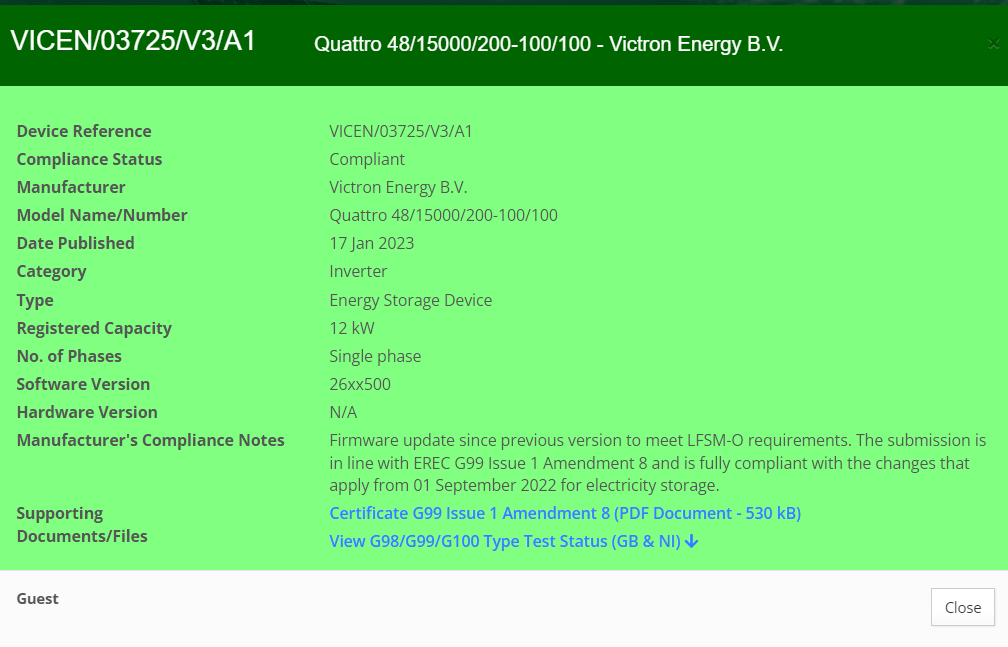My new Quattro system in the UK has an agreed export limit of 13kW. However, today with sunshine and wind in the area the voltage went close to 260V as measured on the AC IN before I intervened. I was exporting close to the 13kW when this happened. I reduced the export limit to what I had with my previous 5kW inverter. This lowered the voltage below 250V.
Looking at the UK grid codes, it seems that no action is taken by the inverter until 262.2V is reached. These figures seem high given the voltage should be no more than 253V and I can't believe it is doing equipment at home any good. May be I am wrong.
I'm going to write a some code that will be monitoring the voltage and vary the max feed in to keep the voltages below 250V. Is there some other way of doing this more easily in settings or is it even necessary for me to do?

 As you'll see, current equipment does not have to start shutting down until 262.2v within a second. If like me, you'll find anything above 250v in the house, things start to fail. My oven element went pop on me not too long ago and my Henry vacuum also failed because most electrical equipment sold is rated at between 230v to 250v, some even rated upto a maximum 240v so I really dont want a voltage above 250v in my house.
As you'll see, current equipment does not have to start shutting down until 262.2v within a second. If like me, you'll find anything above 250v in the house, things start to fail. My oven element went pop on me not too long ago and my Henry vacuum also failed because most electrical equipment sold is rated at between 230v to 250v, some even rated upto a maximum 240v so I really dont want a voltage above 250v in my house. 
